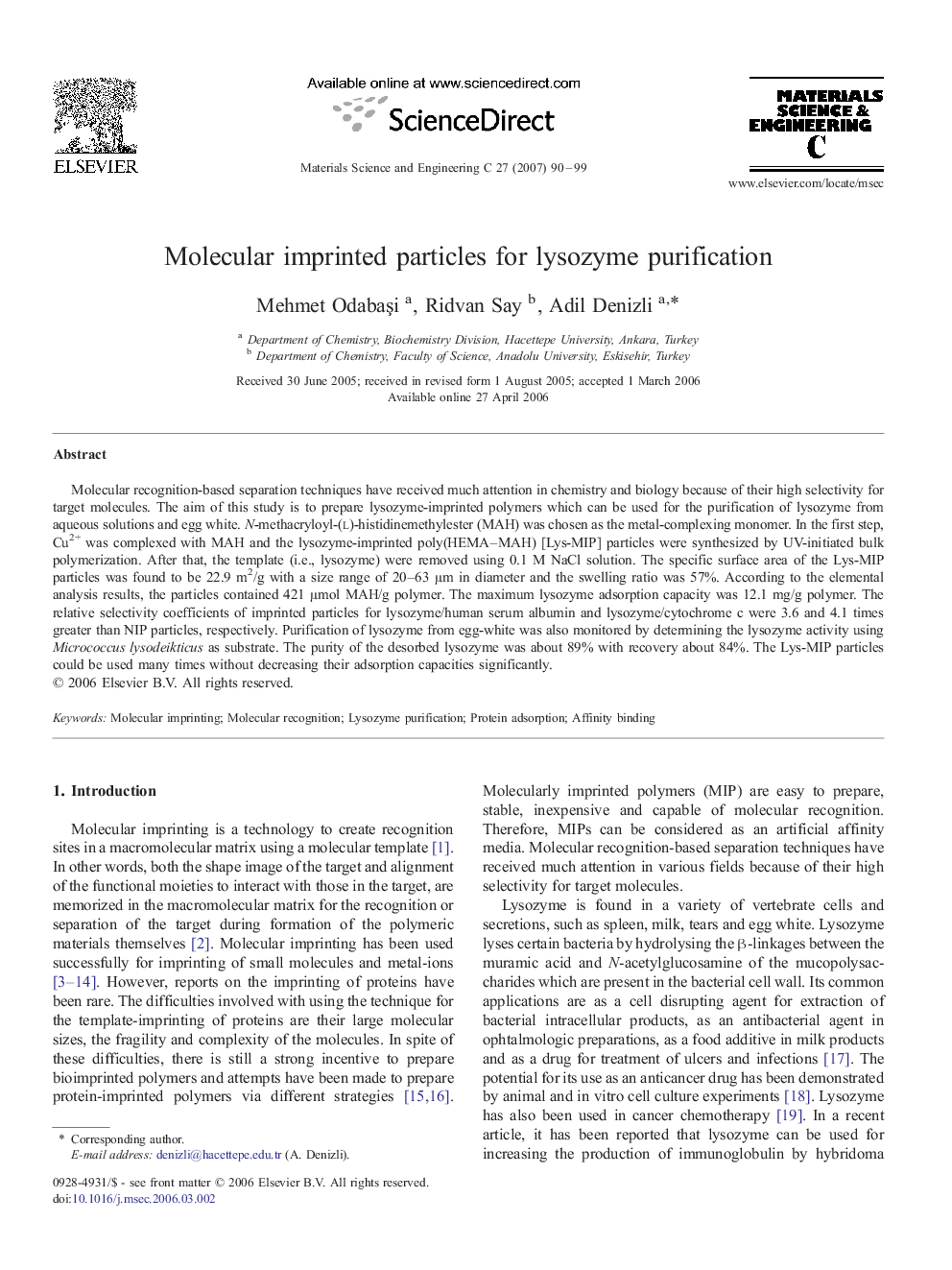| Article ID | Journal | Published Year | Pages | File Type |
|---|---|---|---|---|
| 1430405 | Materials Science and Engineering: C | 2007 | 10 Pages |
Molecular recognition-based separation techniques have received much attention in chemistry and biology because of their high selectivity for target molecules. The aim of this study is to prepare lysozyme-imprinted polymers which can be used for the purification of lysozyme from aqueous solutions and egg white. N-methacryloyl-(l)-histidinemethylester (MAH) was chosen as the metal-complexing monomer. In the first step, Cu2+ was complexed with MAH and the lysozyme-imprinted poly(HEMA–MAH) [Lys-MIP] particles were synthesized by UV-initiated bulk polymerization. After that, the template (i.e., lysozyme) were removed using 0.1 M NaCl solution. The specific surface area of the Lys-MIP particles was found to be 22.9 m2/g with a size range of 20–63 μm in diameter and the swelling ratio was 57%. According to the elemental analysis results, the particles contained 421 μmol MAH/g polymer. The maximum lysozyme adsorption capacity was 12.1 mg/g polymer. The relative selectivity coefficients of imprinted particles for lysozyme/human serum albumin and lysozyme/cytochrome c were 3.6 and 4.1 times greater than NIP particles, respectively. Purification of lysozyme from egg-white was also monitored by determining the lysozyme activity using Micrococcus lysodeikticus as substrate. The purity of the desorbed lysozyme was about 89% with recovery about 84%. The Lys-MIP particles could be used many times without decreasing their adsorption capacities significantly.
